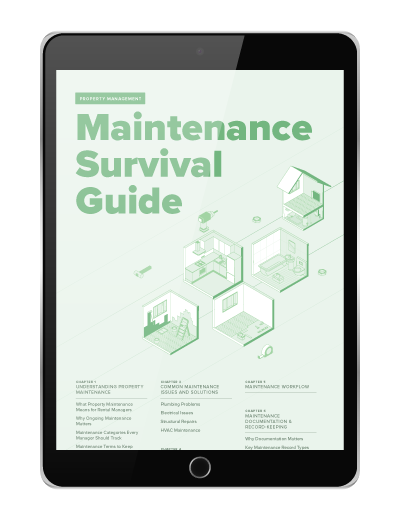Sometimes, it can feel as though the world of real estate revolves around primary markets like New York and San Francisco. However, in 2018, you can expect to see under-the-radar cities like Raleigh, Austin, and Charlotte overtake America’s most prominent cities in terms of their economic and population growth. How can this possibly be the case?
Chart of Accounts
Want clearer, cleaner books? What about a more useful view into your properties or just easier accounting in general?
Get the GuideNew York City, San Francisco, Boston, Los Angeles, Washington D.C., and Chicago are the 6 American cities commonly considered to be primary markets. This is due to their commanding presence in the U.S. real estate market, both in terms of their population and the volume of real estate transactions.
In spite of their outsized impact on the American economy, however, primary markets are not necessarily the fastest-growing cities in the country. Just like the rest of the economy, the real estate market in each of these cities goes through cycles based on supply and demand at every level, from local to global.
Before we talk about why growth in secondary real estate markets is currently outpacing growth in primary markets, it’s important to understand how supply and demand drive the cycles of the real estate market.

What Causes Buyer’s Markets and Seller’s Markets?
Buyer’s Market
In a buyer’s market (also known as a cold market), the supply of available housing is greater than the demand for it. In other words, there are more homes on the market than there are buyers to purchase them. The fact that buyers have a variety of options to choose from gives them an advantage over sellers in negotiations.
You can recognize a buyer’s market by the following conditions:
- There’s more than 6 months of inventory available, and the amount of inventory is higher than in past months or years. (We’ll talk about how to calculate the amount of inventory in the housing market at the end of this section.)
- Homes are selling for less than what they’re listed for.
- The median home sale price is declining.
Seller’s Market
In a seller’s market (also known as a hot market), the demand for housing is greater than the supply. In other words, there are more buyers looking for places to live than there are houses on the market. Because there may be multiple buyers jockeying for a single listing, homes sell more quickly—and they may sell for more than their list prices. Under extreme conditions, this can lead to price inflation or the formation of a “bubble”—and eventually, buyers are priced out, forcing a correction in the market.
You can recognize a seller’s market by the following conditions:
- There’s less than 6 months of inventory available, and the amount of inventory is lower than in past months or years.
- Homes are selling for more than what they’re listed for.
- The median home sale price is rising.
Balanced Market
In a balanced market (also known as a neutral market), the demand for housing is about equal to the supply. In other words, there are relatively equal numbers of buyers looking for places to live as there are homes on the market.
You can recognize a balanced market by the following conditions:
- There’s about 6 months of inventory available, and the amount of inventory is similar to past months or years.
- Homes’ sale prices are relatively equal to their list prices.
- Home sale numbers are stable over time.
- The median home sale price levels out.
How to Calculate Months of Inventory in the Housing Market
Here’s how to calculate how many months of inventory are available in the housing market during a set period of time:
# of total active listings / # of closed transactions
For example, if there were 6000 active listings in September and 1000 sales closed (6000/1000), the result (6) indicates that there are 6 months of inventory available.
On the #BuildiumBlog: What causes buyer's markets + how does it impact property managers? Share on X

How Do Supply and Demand Impact the Rental Market?
When there are more renters searching for places to live than there are units available (i.e. when demand outpaces supply), vacancy rates decrease, and landlords have more freedom to raise rents. When there are more units available than there are interested renters, however, vacancy rates rise, rents stagnate, and many landlords offer concessions to capture renters’ interest. But what happens when global economic forces come into play?
Here’s what’s happening now. In recent years, as the economy recovered from the recession, we saw exponential growth in home prices. This was particularly true in primary markets, which rebounded from the recession faster than other cities, with home prices rising back to their pre-recession highs as early as 2014.
Whenever home prices are high, it has a positive impact on the rental market, since renters who may otherwise have become homeowners decide to stay put for the time being. In other words, when the demand for affordable homes outpaces the supply in a given market, many would-be homebuyers take their demand to the rental market instead.
The problem is that pent-up demand for housing doesn’t just push up home prices—it causes rents to rise, too. This is exactly what happened in primary markets after the economy recovered from the recession: Rents rose to never-before-seen levels in cities like New York and Boston, making both renting and owning a home nearly unaffordable for many residents.
Then, however, in 2017, we saw rents flatten and even decline in primary markets. This concerning trend is expected to continue in 2018. While the demand for rental housing in these cities hasn’t lessened, the supply of rental units on the market has increased—the result of a flurry of multi-family construction by developers looking to capitalize on rising prices in 2015.
So, why does the construction of much-needed multi-family properties in primary markets cause rents to flatline? In order to answer that question, we first need to talk about absorption rates.
Absorption Rates
Whenever newly built properties come online in a particular area, increasing the supply of housing relative to the demand for it, they need to be “absorbed” by the market. Unless more renters suddenly flock to the city, increasing the demand for places to live, you’ll notice rents stagnating and vacancy rates rising.
A market’s absorption rate can be a positive or negative number. A positive absorption rate indicates that demand is greater than supply. A high + positive absorption rate indicates that new units will be rapidly snatched up by buyers, and homes may sell for more than what they’re listed for. It’s like pouring water onto a dry sponge—it’s absorbed right away.
A negative absorption rate indicates that supply is greater than demand. A high + negative absorption rate indicates that new units may remain vacant for a while, and homes may sell for less than what they’re listed for. It’s like pouring water onto a wet sponge—it’s already saturated, so it won’t be able to absorb more until it dries up a bit.
Here’s how the absorption rate is calculated for a given period of time:
# of vacant units + # of newly constructed units – # of demolished units – # of vacant units
If there are 1000 available units, and 100 are rented each month, the supply will be absorbed within 10 months (1000 / 100 = 10). Alternatively, if there are 1000 available units, and 100 are rented out in a given month, the absorption rate is 10% (100 / 1000 = 0.10).

Why Are Secondary Markets Outperforming Primary Markets?
Now that you understand the basic economic principles at play in the real estate market, let’s dig into why secondary markets are currently outpacing primary markets.
How can supply and demand explain this phenomenon? Due to the affordable housing shortage that we’re experiencing nationwide, homebuyers are competing for a limited supply of homes in their price range. As we’d expect, this pent-up demand pushes prices up. However, when the demand for housing outpaces the supply in a market for too long—and when prices grow so exponentially that they eclipse wage growth—buyers begin to drop out.
Meanwhile, back when prices first started to rise, savvy developers leapt at the opportunity to make some money by constructing new multi-family properties. When these units came online a year or two later, however, this caused a supply-and-demand imbalance: The sudden increase in supply, not yet absorbed by the market, outweighed the amount of demand from cost-burdened renters—causing rents to stagnate. Making matters worse is the fact that these new units do little to address the affordable housing shortage. As we discussed in our predictions for the 2018 housing market, developers are forced to construct luxury buildings in order to turn a profit—so even though new units are entering the market, few renters can afford them.
In the meantime, some homebuyers decide to stay renters until price growth levels off; but when both renting and owning a home have become unaffordable, some people migrate to secondary markets. As we discussed in our previous post:
“Secondary markets are generally mid-sized cities that have begun to experience an uptick in growth—and as a result, they begin to capture people’s attention. We see steady growth in the local economy, with new jobs and businesses opening up, as well as an emerging tech sector in many cases. We also see steady growth in the city’s population as young, educated professionals and families move in. The housing market steadily gains strength but remains less competitive than primary markets—resulting in lower prices for homebuyers and higher returns for investors. In the rental market, occupancy rates begin to rise; but because the supply of apartments is relatively unconstrained, rent prices stay affordable for most residents.”
—2018: The Year of the Secondary Market? 24 Under-the-Radar Cities That Investors Are Eyeing
Different conditions exist in secondary markets than in primary markets—which is why they’re so alluring to buyers. New residents are steadily moving in, generating consistent demand for housing. Meanwhile, building new housing is a much more cost-effective venture than in primary markets. Because nothing constrains either the supply or the demand, the two forces maintain their equilibrium as the city grows—keeping rents and home prices affordable for residents. At the same time, however, strong rent growth and rising occupancy rates present a great opportunity for investors and property managers looking to grow their businesses in 2018.

Our Advice for Property Managers & Landlords in Primary Markets
So, if you’re a property manager or landlord located in a primary market, how can you use this knowledge to position your business for success in 2018?
Essentially, what we have today is a renter’s market. Because the supply of available housing is rising relative to residents’ demand for it, they have a variety of options to choose from—giving them the leverage in this situation.
As a result, your job is to make your units more attractive than the competition. How do you do this? Through concessions and amenities.
Why are concessions and amenities the answer to the challenges you’ll face in 2018? It’s because property managers and landlords won’t be able to lower rents without hurting their margins in expensive primary markets. In addition, charging new tenants less than current tenants can have the unintended consequence of discouraging lease renewals.
Instead, you’ll need to consider incentives like these:
- Giving 1 to 3 free months of rent
- Reducing security deposits
- Paying broker fees
- Giving gift cards
- Paying moving expenses
- Temporarily reducing rents
- Waiving amenities fees
In addition, you should stay on top of what the competition in your area is offering. Have they created new outdoor spaces for their residents to enjoy? Are they adding laundry machines and dishwashers to their units? Are they investing in renovations to make their buildings more visually appealing? Look into which updates will offer you the greatest return on your investment, and consider making them before leasing season ramps up this year.
How can you leverage concessions to attract + keep residents in 2018? Find out on the #BuildiumBlog! Share on X
There are three considerations that you should keep in mind in offering concessions to prospective renters:
- What can you offer to your current residents upon lease renewal to keep them in place? After all, filling vacancies is just as critical to your success as retaining residents who are already there.
- How can you distribute concessions across the length of the lease to keep renters in place longer? For example, rather than giving 3 free months of rent, could you reduce rents by 25% across the length of the lease, or only offer this incentive if they’re willing to sign an 18- or 24-month lease?
- Make sure that you’re screening residents to ensure that they can afford to pay rent once the concessions have ended. If you don’t do proper credit, employment, or reference checks, you may end up with a building full of tenants who can only pay rent at the reduced rate.
Property managers and landlords may have to offer concessions in order to attract new renters—but don’t despair: Supply and demand always find their equilibrium eventually. It’s the natural cycle of the economy.
Although rents have stagnated in primary markets, they’re still hovering around their all-time highest levels; and the demand for rental housing in America’s most prominent cities shows no signs of abating. What’s changed is the amount of supply: A shortage of affordable housing, coupled with a flood of new units in primary markets that take time to be absorbed. However, the wave of multi-family construction peaked in 2015, so the flood of new supply is already waning.
Supply and demand will always level out over time. Your mission in 2018 is to ride the wave, keeping abreast of new developments in the economy and adjusting your business accordingly. And we hope you know that the Buildium Blog team will be here alongside you, keeping you in-the-know as you tackle these challenges and opportunities in 2018.

Learn why rent growth is stagnating in major cities and how to survive it on the #BuildiumBlog! Share on X
If you liked this post, there are two other pieces of content that you won’t want to miss:


